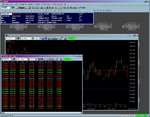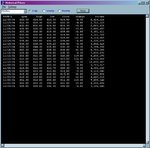Thanks, thats a great help.
So your saying that more sources agree: LSE,FT, MT and bloomberg than agree with yahoo and eSignal. I would have thought for a data feed dedicated company like eSignal they could have been trusted. advfn doesn't agree with yahoo either, so probably would join the other group. I wonder if there are several destinct groups.
There can't be that many price data sources, most of these companies must be getting there data from a big third party. Probably bloomberg or reuters. Maybe, its these two biggies that cause the difference with a slightly different set up on how they call the price and volume. Maybe there really isn't a black and white about the close and volume for the day and I should develop systems that are robust enough to handle a certain give in price levels.
The difference wasn't dramatic, less than a percent, it just concerned me that there would be any difference at all.
What you said could also explain why it is always volume and mostly close that differ. But I wonder why the open price would vary sometimes too.
What did you do in the end? Did you check out who provides your brokers data feed and stick with that?
One other thing that concerns me is that my broker is dedicated to CFDs and has out of hours trading on a lot of stock. These out of hours trading sessions could have dramatic impact on any systems I develop and could really be a pain in the ****.
I think its irritating that most brokers dont allow us to download there data for our own information so we know exactly what prices effect us. Do you know of any brokers that do this?
cheers


